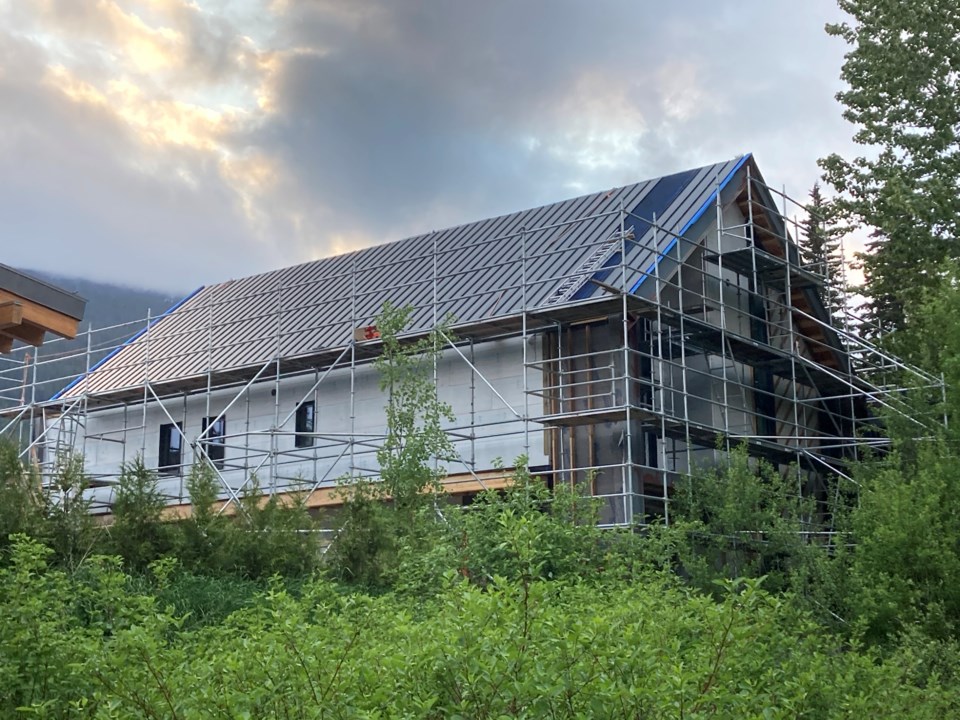Local environmental advocates are applauding changes to the Resort Municipality of Whistler’s (RMOW) building bylaw that will move the resort closer to a zero-carbon future.
Whistler’s mayor and council gave first three readings to the new Zero Carbon Step Code bylaw at the May 16 council meeting.
Prior to the vote, Claire Ruddy, executive director of the Association of Whistler Area Residents for the Environment, addressed council in regards to the proposed change.
“Tonight’s proposed building and plumbing regulation amendment bylaw and the adoption of the Zero Carbon Step Code is a perfect example of policy action, of political action and a vote option opportunity that could influence our share of community greenhouse gas emissions for decades to come,” she said.
“Buildings last for decades. There are very few actions that council, with one decision, can enact that would lead to a nearly 10-per-cent reduction of emissions needed to reach our 2030 targets.”
The new decree for Whistler comes in tandem with the latest update to the British Columbia Building Code (BCBC), which, as of May 1, requires most new construction in the province to be 20-per-cent more energy efficient than the base 2018 BC Building Code.
With those changes, the provincial government is also allowing local governments to opt-in to the new Zero Carbon Step Code (ZCSC), which will eventually be integrated into the BCBC.
With council’s assent on May 16, Whistler will opt-in to the ZCSC, establishing a more stringent standard for reducing operational greenhouse gas emissions in new buildings. All municipalities will be required to follow the new standard by 2032.
The ZCSC specifies progressively higher steps of GHG emissions limits for new builds in the resort: moderate, strong, and zero carbon.
Part 9 builds in Whistler will have two pathways under the ZCSC: either limit the overall quantity of annual GHG a building emits, or limit the intensity of GHG emissions a building produces.
For Part 3 buildings, the ZCSC specifies they meet a GHG intensity limit based on occupancy type (multi-unit residential, office, retail or hotel).
In a presentation to council, RMOW manager of climate and the environment Luisa Burhenne outlined the provincial government’s changes to the Step Code and what the ZCSC will achieve, citing the greenhouse gases produced by buildings across Whistler and the need for reduction to accomplish the municipality’s ambitious climate goals.
In 2021, buildings made up about 42 per cent of all emissions in the resort.
“As a local government, we have much more authority over new buildings through low-carbon building requirements, and that makes our Big Move No. 4 a priority action,” Burhenne said, referencing the RMOW’s Climate Action Big Moves Strategy (and No. 4, specifically: Build zero-emission buildings).
“Big Move 4 has the goal that, by 2030, all new buildings will achieve the top step of the BC Energy Step Code, use only low-carbon heating systems and have embodied carbon emissions drop by 40 per cent,” she added.
While the ZCSC aims to reduce operational GHG emissions in new buildings, it does not address embodied carbon emissions or retrofitting existing buildings.
Whistler adopted Step 3 of B.C.’s Energy Step Code (ESC)—requiring single-family builds to be 20-per-cent more efficient than the base BC Building Code—in 2019.
Since then, staff have engaged with local builders, industry stakeholders and other municipal councils to inform next steps for Whistler.
“What we heard was general support for our approach, and really heard that the building industry was ready to move to a higher standard to tackle GHG emissions in new buildings,” Burhenne said.
“The main feedback points we received was that it’s really important that we provide clear implementation timelines and clarity on our implementation approach.”
As such, the RMOW has set Jan. 1, 2024 as the implementation date for the new ZCSC, and will also increase the ESC step for both Part 9 and residential Part 3 buildings on that day.
With those changes, Part 9 builds (single-family, duplex or townhomes) will be required to meet Step 4 of the ESC, with strong carbon performance, while residential Part 3 builds must hit Step 3 with strong carbon performance.
According to RMOW climate action, planning and development services manager Dale Mikkelsen, building and rezoning applications already in process will not be affected by the new Step Code requirements, as they are all grandfathered into the code required at the time of their initial application.
“Typically, any in-stream application is grandfathered into the application date, and so one thing that we will monitor for is whether there will possibly be a scramble for applications to come in before the Jan. 1 date, and that would be through the building department, not necessarily [through] rezoning or planning [departments],” Mikkelsen said.
“If they already have a building permit and they came in for a significant amendment to their building permit that would constitute essentially a new building or development permit, then it would be held to the new codes as of Jan. 1.”
Council was similarly optimistic about implementing the new Step Code, and grateful to all the municipal departments for working together to develop the amended bylaw.
“Looking at those steps that we need to take to get down to where we need to be, we still have that gap,” said Councillor Cathy Jewett.
“I’m very hopeful that this will be a big contributor to get to our goals.”
Read more at whistler.ca/stepcode.




